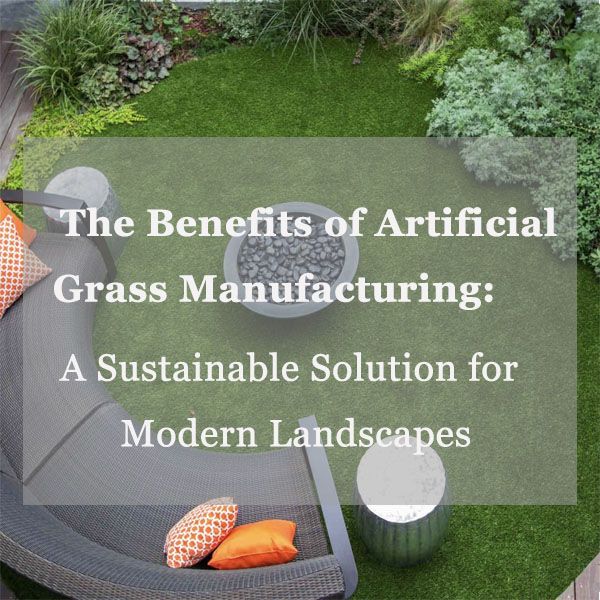In an era where sustainability and environmental consciousness are increasingly important, artificial grass manufacturing emerges as a game-changing solution for modern landscapes. This innovative approach to creating lush greenery offers a multitude of benefits that go beyond aesthetics. From conserving water resources to reducing chemical usage, artificial grass manufacturing provides a sustainable alternative to traditional lawns. This article explores the environmental advantages that make synthetic grass an intelligent choice for today’s eco-conscious individuals.
1, Water Conservation: A Prudent Approach
One of the most significant benefits of artificial grass manufacturing is its contribution to water conservation. Unlike natural grass, which requires regular watering to stay healthy and vibrant, artificial grass eliminates excessive irrigation. In regions facing water scarcity or drought conditions, artificial grass offers a practical solution that significantly reduces water consumption. This conservation of water resources not only benefits the environment but also lowers water bills for homeowners and businesses.
2, Reduced Chemical Usage: A Greener Approach to Lawn Care
Traditional lawn maintenance often involves chemical fertilizers, herbicides, and pesticides. These substances can leach into the soil and waterways and potentially harm wildlife. In contrast, artificial grass manufacturing provides a greener approach to lawn care. Artificial grass does not require chemical treatments to stay lush and vibrant, reducing the reliance on harmful substances. By choosing artificial grass, individuals contribute to a healthier ecosystem by minimizing chemical pollution.
3, Carbon Footprint Reduction: A Step Towards Mitigating Climate Change
The manufacturing process of artificial grass incorporates eco-friendly practices that help reduce carbon emissions. Firstly, artificial grass production requires less energy than maintaining natural grass, which involves mowing, watering, and operating lawn care equipment. Additionally, many artificial grass manufacturers now utilize recycled materials in their products, such as recycled plastics. By diverting waste from landfills and incorporating recycled content, the carbon footprint associated with manufacturing artificial grass is further diminished.
4, Minimal Maintenance: Time and Resource Savings
Natural grass demands regular upkeep, including mowing, watering, and fertilizing. These maintenance activities not only consume time but also require the use of energy, water, and chemicals. With artificial grass, the need for such extensive maintenance is eliminated. Homeowners and businesses can enjoy a beautiful and evergreen landscape without the constant demands of lawn care, resulting in significant time and resource savings. This aspect is particularly advantageous for individuals with busy lifestyles or commercial properties seeking to maintain a pristine appearance with minimal effort.
5, Longevity and Durability: Extended Lifespan, Reduced Waste
Another environmental benefit of artificial grass manufacturing is the longevity and durability of the product. Well-made artificial grass can withstand heavy foot traffic and extreme weather conditions and retain its aesthetic appeal for many years. This extended lifespan significantly reduces the frequency of replacements, thereby minimizing waste. In contrast, natural grass requires regular reseeding, replanting, and extensive renovations to maintain its visual appeal. By choosing artificial grass, individuals contribute to waste reduction and landfill diversion.
6, Preservation of Natural Resources: A Responsible Choice
The manufacturing process of artificial grass not only conserves water but also preserves other valuable natural resources. Artificial grass eliminates the need for fuel-powered lawnmowers, reducing the consumption of fossil fuels. Additionally, it eliminates the need for synthetic fertilizers and pesticides derived from non-renewable resources. By opting for artificial grass, individuals make a responsible choice that helps protect and preserve our limited natural resources.
Conclusion:
Artificial grass manufacturing represents a sustainable solution for modern landscapes. Artificial grass contributes by conserving water, reducing chemical usage, minimizing the carbon footprint, and offering long-lasting durability.
Choosing artificial grass enhances the beauty of outdoor spaces and demonstrates a commitment to sustainability and responsible resource management. As we strive to create a more sustainable future, artificial grass manufacturing is an eco-conscious choice for individuals and businesses alike.

